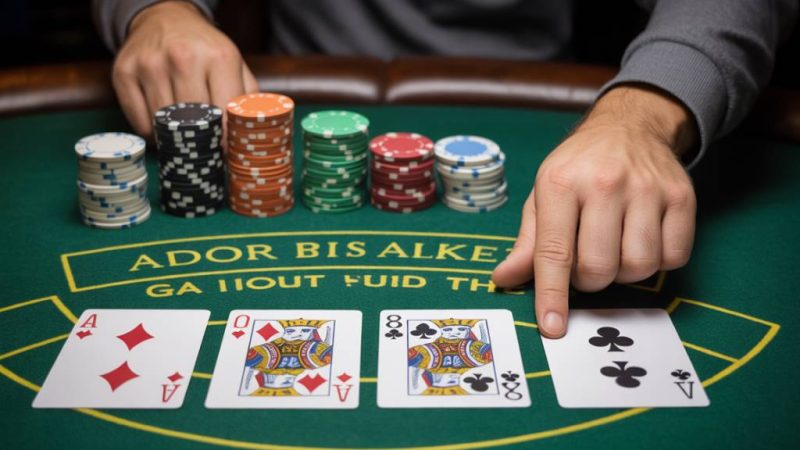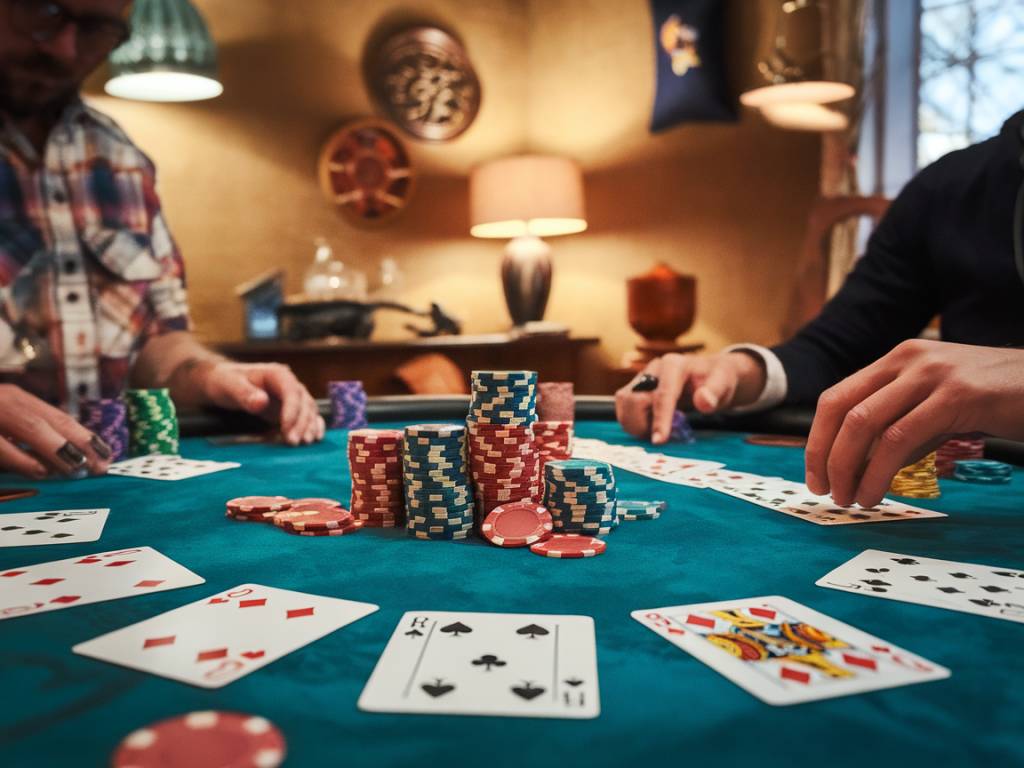How to Master Betting Strategies in Pot-Limit Omaha

Understanding Pot-Limit Omaha Basics 🃏
Hey there, I’m Mason, a lifelong poker player with a deep affection for Omaha. Pot-Limit Omaha (PLO) is one of the most strategic and explosive forms of poker out there. If you play No-Limit Hold’em, you’re already a step ahead, but be warned—PLO is a different beast altogether. With four hole cards instead of two and betting capped by the size of the pot, mastering betting strategies becomes absolutely critical.
In Pot-Limit Omaha, you must use exactly two of your hole cards and three community cards to form your hand. Because players get to see nine cards in total (four hole cards and five community), hand values tend to run much higher than in Texas Hold’em. That changes everything—especially how, when, and why you bet. 🎯
Position is Power 🔁
Before we even get into bet sizing or bluffs, let’s talk position. Position is king in PLO. Being last to act gives you the advantage of seeing how your opponents respond before you make your decision. The later your position, the more flexibility you have in adjusting your bets.
If you’re in early position, play more conservatively with your betting. From the button or cutoff, you can expand your betting range and even apply pressure with semi-bluffs or pot-building bets. Be mindful of the fact that hands change value rapidly from street to street in PLO, so being able to react last is a huge edge.
Start with Strong Hands 💪
Your preflop hand selection dramatically influences your postflop betting options. Some beginners make the mistake of overplaying any four playable-looking cards. The truth is, connected and suited hands—those that work well together—are essential if your betting strategy is going to be profitable across sessions.
Hands like As Ad Ks Kd are pure gold, whereas something like 7c 9d Qh 2s in early position is not worth investing chips. Always favor hands with coordinated suits and connectivity; they give you more real equity on multiple board textures and allow more aggressive betting post-flop.
Pot Control vs. Pot Building ⚖️
Let’s get into betting concepts. One of the most crucial ideas in PLO betting strategy is whether you’re pot-controlling or pot-building.
- Pot Building: This is when you’re ahead or semi-ahead and want to charge your opponents. You might be holding a strong wrap straight draw or combo draws like flush + straight. You’re adding money to the pot while you still have fold equity or good drawing potential.
- Pot Control: Use this when you’re unsure of where you stand. Maybe you’ve flopped top pair on a wet board. Betting huge here can backfire—if someone raises or check-raises, you’re now playing a bloated pot with a vulnerable hand.
This balance is delicate and changes with the board texture, your opponents’ tendencies, and stack sizes.
Understanding Pot-Sized Bets 🧠
In PLO, you can only bet up to the size of the pot. But what does that actually mean? Let’s say the pot is $30, and an opponent bets $20. The next allowable raise (a pot-sized raise) would be:
$20 (bet you’re facing) + $30 (the pot before the bet) + $20 (your call) = $70 maximum raise.
So your pot-sized raise would mean putting in a total of $90 ($20 call + $70 raise). Understanding how this works lets you put maximum pressure on your opponents or calculate how many streets it might take to get all-in when you have a monster hand.
Bet Sizing by Situation 🎲
Your bet sizing should vary depending on several factors, including your hand strength, the board texture, and your opponent’s style. Here’s a rough guide:
- Dry Boards: These are ideal for small continuation bets (50-70% of the pot). Your opponents are less likely to hit, so you can steal pots without huge risks.
- Wet Boards: Think connected cards and suited combos. In these spots, be prepared to fire pot-sized bets, especially when you’re holding a draw to the nuts or trying to protect a vulnerable hand.
- Heads-Up vs Multiway: Bet smaller in multiway pots unless you’re holding a monster. Pot-sized bets are more effective in heads-up pots where fold equity matters more.
Remember, varying your bet sizes makes you less predictable. Over time, your long-term edge comes not just from the hands you play, but from how you bet them.
Know Your Opponents 🧑🤝🧑
One of the subtleties I love about PLO is how much information betting lines reveal. Treat every bet you see at the table as data.
- Tight players: If a tight player pots the flop, don’t assume they’re bluffing. They might have the nuts or a strong draw to it.
- Loose-aggressive players: These are the players you’ll want to counter with strong hands and implied odds. Let them bet the pot for you. Trap them when you flop strong.
- Calling stations: Don’t bluff these players. They’re going to call you down with weak holdings. Instead, stick to value betting and be clear on your ranges.
Bluffing in PLO: Use With Caution 🕵️
Bluffing does exist in PLO, but it’s less common—and less effective—than in No-Limit Hold’em. With so many hand combinations possible, your opponents are more likely to have a piece of the board. That said, bluffing is still part of a balanced betting strategy—especially if you’re representing a very connected or monotone board.
Choose your spots wisely. Semi-bluffs on the flop with nut flush draws or combo draws are ideal. Pure bluffs are better reserved for late streets and specific opponents who can fold.
Using Stack Sizes for Maximum Impact 💼
How deep you and your opponents are plays a major role in your betting decisions. With deeper stacks, you can get more value with disguised hands and draw-heavy boards. You also have more room for layered bets across multiple streets.
In contrast, with shallow stacks, your bets often commit you to the pot. In these situations, betting aggressively with strong draws or made hands is usually the right play—you’re not deep enough to get fancy.
Tools & Products to Elevate Your Game 🧰
If you want to take your betting strategy in PLO to the next level, consider investing in the following:
- PLO Solvers: Tools like PLO Trainer and Vision GTO are great for understanding optimal bet sizing and frequencies.
- Tracking Software: Use tools like PokerTracker or Holdem Manager to analyze how often you’re betting, size preferences, and profitability by hand type.
- Strategy Books & Courses: Consider in-depth courses from pro players or reads like Jeff Hwang’s “Pot-Limit Omaha Poker.”
I’ve personally used several of these tools and I can’t overstate their value—they provide deep insight into the game that no amount of gut feeling can replicate.
Final Thoughts 🎯
Mastering betting strategies in Pot-Limit Omaha is about more than just knowing when to push chips into the center. It’s about leveraging position, understanding board texture, choosing the right hands, and adjusting your bets based on your opponents. It’s a dance of psychology, math, and timing—and when you get the steps right, PLO becomes endlessly rewarding.
If you’re just starting out, pick one concept from this article and apply it to your next session. Layer by layer, your betting will become sharper, your opponents will start folding more often, and more pots will ship your way. 🏆
See you at the tables!






